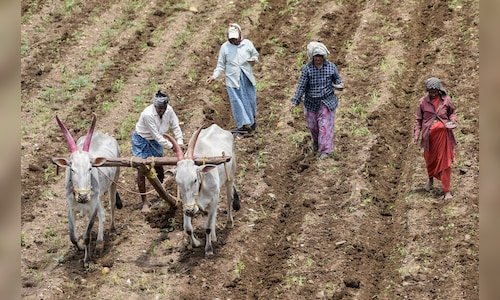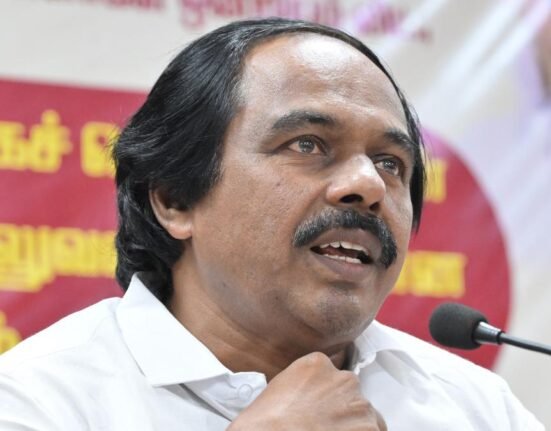Agriculture is a cornerstone of India’s economy, contributing 18–19% of the country’s GDP and employing over 50% of its population. India holds the title of the largest global producer of milk, pulses, and jute, and ranks second in the production of rice, wheat, sugarcane, vegetables, fruits, and cotton. Despite this, the sector faces productivity challenges compared to global leaders like China, the US, and Brazil.
To address these challenges, the Ministry of Agriculture and Farmers Welfare allocated ₹1,25,036 crore for 2023-24, reflecting a 5% increase over the revised estimates for 2022-23. However, it is recommended that in the upcoming Budget following key interventions should be incorporated to further address these issues effectively:
- Enhancing Access to Quality Seeds
Seeds and planting materials play a pivotal role in boosting productivity. Between 2019 and 2021 alone, the Indian Council of Agricultural Research (ICAR) developed and released 562 new crop varieties. However, their adoption has been limited. In the upcoming Budget, government programs like Development and Strengthening of Infrastructure Facilities for Production and Distribution of Quality Seeds have focused on meeting the seed requirements, but the scope of these programs should be widened for propagating high-yielding, climate-resilient varieties to adapt to changing weather patterns and shrinking agricultural areas. Conducting technology audits of ICAR institutes could help streamline the dissemination of these improved varieties.
- Improving Livestock and Fisheries Productivity
Livestock and fisheries are critical for rural livelihoods. Despite progress in artificial insemination for livestock breed improvement, coverage remains limited to 30%, and success rates are hampered by inadequate training. Under the National Livestock Mission, the government should focus on capacity building for artificial insemination professionals to improve coverage and outcomes. In addition to the Pradhan Mantri Matsya Sampada Yojana (PMMSY) for fisheries, the government should prioritise establishing modern hatcheries through public-private partnerships to replace or enhance outdated government hatcheries to meet the growing broodstock requirements.
- Subsidising Feed and Fodder
India’s dairy sector contributes 25% of global milk production, with India’s dairy production grew by a CAGR of 5.6% between 2014-15 and 2023-24. However, the availability of quality feed and fodder directly impacts the health and productivity of dairy animals. To support the 7 crore farmer families dependent on dairy, the government could introduce a program subsidising feed and fodder through direct benefit transfer, similar to fertiliser subsidies.
- Promoting Mechanisation for Smallholders
With over 78% of Indian farmers owning less than 2 hectares of land, large machinery often proves unviable. The All India Coordinated Research Project (AICRP) has developed various small-scale machines through 60 centers across different agroclimatic zones for operations like sowing, harvesting, and plant protection, but these innovations have yet to reach most farmers. The government should develop initiatives to promote the commercialisation of these machines and ensure their widespread availability across the country. Additionally, existing programs like the Rashtriya Krishi Vikas Yojana (RKVY) and the Mission for Integrated Development of Horticulture (MIDH) should allocate greater resources toward the integration of innovative technologies, such as IoT devices for precision agriculture and other advanced agri-tech components.
- Reducing Post-Harvest Losses
India suffers significant post-harvest losses, amounting to about ₹1.5 lakh crores annually. Initiatives like Kisan Rail and reefer coaches have been effective in reducing wastage and enhancing farmer incomes. The government should expand these efforts in the Budget by modernising mandis through public-private partnerships (PPPs) and infrastructure schemes. Developing packhouses, grading centers, and cold storage facilities adjacent to mandis will further minimise losses and improve market access.
- Boosting High-Value Exports
India ranks 8th globally in agricultural exports, with marine products, rice, and spices leading the way. However, high-value crops like fruits and vegetables remain underrepresented. The budget should emphasise creating export-ready ecosystems for crops like grapes, mangoes, and pomegranates, along with aquaculture products such as ornamental fish. Programs like the One District One Product (ODOP) initiative can play a crucial role in promoting export-oriented horticulture and aquaculture.
- Building Awareness about Indian Agricultural Produce
India boasts over 150 agricultural Geographical Indication (GI) products; however, apart from widely recognised items like Basmati rice and Darjeeling Tea, most remain largely unknown in export markets.
India holds a significant advantage in the dairy sector, with over 95% of indigenous cows in the subcontinent producing A2 milk, highly valued for its nutritional benefits. Additionally, the country boasts the largest population of buffaloes, known for their nutrient-rich milk. To leverage these strengths, targeted programs should focus on building international awareness and promoting India’s indigenous agricultural and dairy products in global markets.
Conclusion
The agricultural sector is vital for India’s economy and rural livelihoods. By addressing critical challenges related to seeds, livestock, mechanisation, agri-tech adoption, and post-harvest management, the upcoming Budget can empower farmers, boost productivity, and enhance global competitiveness. These measures will not only strengthen the sector but also ensure sustainable growth and improved income for India’s farming community.
—The author, Avinash Chandani, is Partner at Deloitte India. The views expressed are personal.







